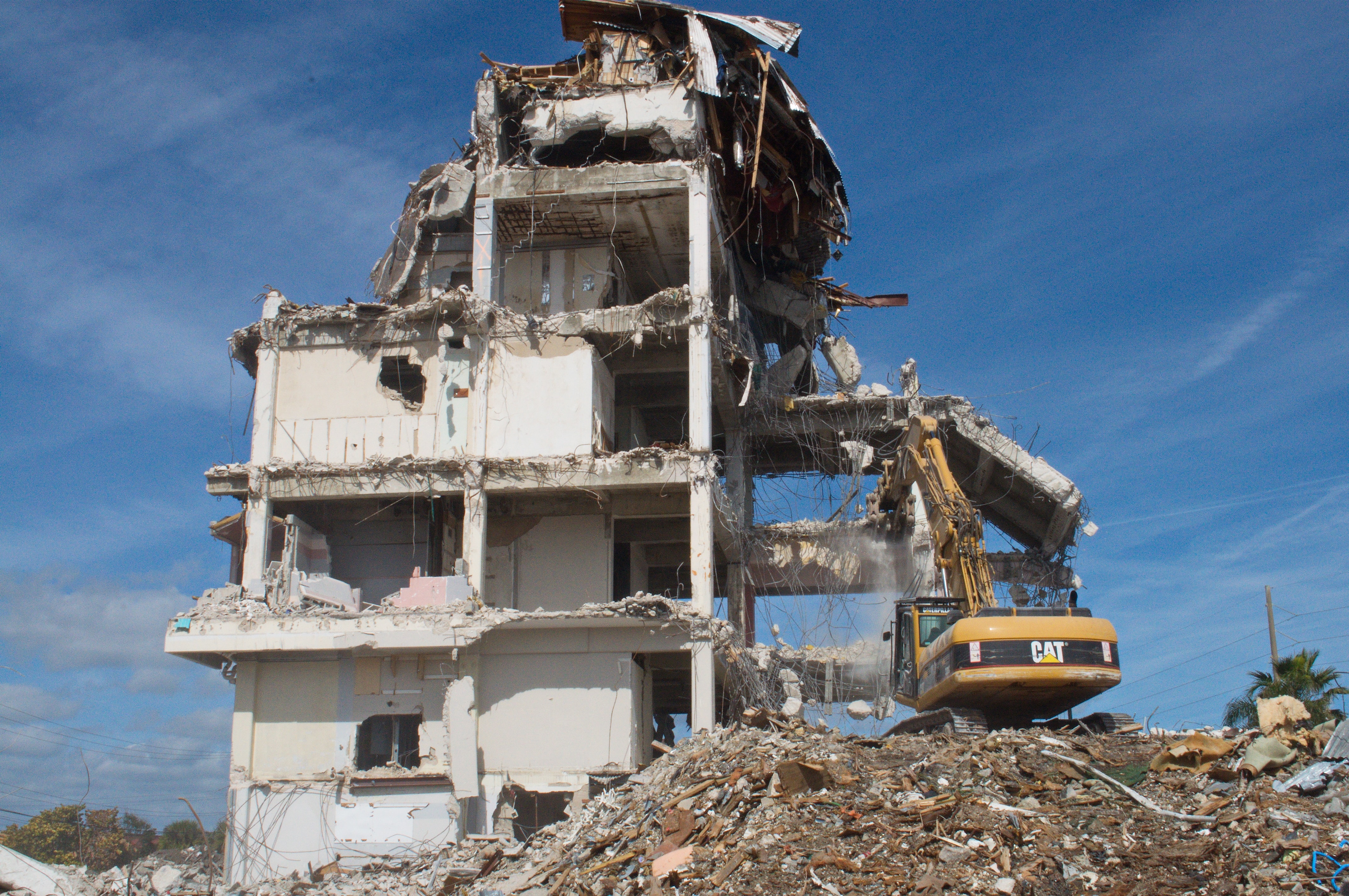Have you ever noticed how almost every futuristic dystopian movie portrays our earth as one giant pile of concrete waste and debris? Suffice to say that the portrayal is not that far from the truth. Almost half of our landfills are occupied by construction and demolition waste. According to the construction and demolition recycling association, in the USA, construction and demolition waste accounts for about 325 million tons of waste each year. And almost half of it comes from residential construction and demolition. The US green building council estimates that building construction accounts for 40% of the material used and 30% of America’s total waste stream.
While construction and demolition are messy processes, there is still room for improvement to minimize the amount of waste they make. Every phase of the construction and demolition process can impact how much waste is produced from a project.
From designers, architects, engineers to constructors and site supervisors, everyone can minimize construction and demolition waste. Here is a basic rundown on how construction and demolition waste can be managed.
What Counts As Construction and Demolition Waste?
When a new building or structure is constructed, it is usually built by demolishing an older one. It is mostly the case as we have limited space but a rising demand. As a solution to this land crunch, we demolish the past structures and build newer ones to house even more people.
Almost all civil engineering projects-construction or demolition of buildings, bridges, roads and highways, dams, utility plants, and piers creates construction and demolition waste. Some common construction and demolition wastes are-
- Concrete
- Metal
- Wood
- Gypsum
- Bricks
- Glass
- Asphalt
- Plastic
- Doors windows or other fixtures
What Can Be Done For Construction And Demolition Waste Management?
While waste management generally involves hiring a dumpster and removing waste from the site in most construction and demolition projects, it is not enough for environmental sustainability. When a Discount Dumpster Rental can remove all the waste from the site, they end up in a landfill.
And when there is not enough space to accommodate our population, there is even a slimmer chance of having more space for our landfills. To minimize the construction and demolition, the waste we need to curb it to the root.
Reduce, Reuse and Recycle
Reduce, reuse, recycle and rebuy is the most effective method of minimizing construction and demolition waste. The “reduce” initiatives curb the use of the material in the first place, and if you don’t use the material, there is no chance of it creating a waste, to begin with.
The “reuse” initiatives ensure existing materials are being used either for a new purpose or in the same way with modifications. The “recycle” initiative is the process of creating new material from the used one. Recycling is less sustainable than the first two as it uses energy for the recycling process.
Reducing the Material Use
This can be done from the early stage of design to even during the handling of site logistics. Reducing material will ensure you don’t produce waste in the first place. There are various ways you can ensure resource reduction-
- Renovate or preserve existing buildings instead of constructing a new one
- Optimizing the utility of new structure so that it can be used for an extended period
- Select recycled or reusable material
- Opt for an off-site construction method
- Be strategic with material purchase, order only what you need, once you order a material
Reusing Construction and Demolition Material
Demolition accounts for almost 90% of total construction waste. Before you decide to demolish a structure, you need to assess how much of it you can salvage.
Deconstruction
Deconstruction is the method of disintegrating a structure down to its material to sort out what can be used or recycled. It is different from a complete teardown of a structure. In the deconstruction process, the teardown is more methodical and purposefully slowed down for evaluating how each material can be salvaged and repurposed. After the careful assessment, you decide which materials are salvageable and act accordingly.
For instance, the windows and fixtures of a structure can be worn or warped, deeming it unusable, but the bricks or wall insulation of that building still could be used for another decade. In that case, a deconstruction method will help you to sort them out to ensure optimum use for those materials.
Which Materials Can Be Salvaged Or Reused?
Building materials are generally sturdy and durable, and they can last for a long time even if a building is demolished. Besides, different components of a building can have different lifespans. And you should optimize the use of these materials by reusing or repurposing them.
Even if you don’t have any use for some material, you can donate them or sell them to salvagers. Here are some common materials that you can reuse (or donate to be reused):
- Doors, windows, hardware, and plumbing fixtures
- Brick, masonry can be used for site filling and ground covering
- Wood cuttings can be reused or used as mulch, or biofuel
- Plastics can be used for recycling
Recycling
The materials that can be used on-site can be reserved for the construction project at hand. For recycling the rest, you can use different recycle containers to separate the items on-site. If you decide on on-site segregation, you need to train the project personnel about the recycling and item separation method.
Or you can put them in one recycling box and sort them out off-site. These are some ways that construction and demolition materials can be recycled.
- Concrete, asphalt can be made into aggregate or other concrete or asphalt products
- Steel, brass, copper, and other metals can be recycled for making fixtures
- Wood cut-offs can be recycled to composite wood, furniture, or even mulch, or compost
Rebuying
Rebuying involves selecting used or recycled materials for new construction. For instance, salvaged bricks from an old building can be used in a new one. And if you can source the materials locally, you can save the cost of transporting the material.
The Bottom Line
To swiftly run the waste management process, you need a proper waste sort-out system in your project site. Even if your effort seems minuscule considering the staggering percentage of waste, it will surely inspire others to follow your method. While it might not be possible to cut down construction and demolition waste to zero, you can still significantly minimize the number just by being strategic.







